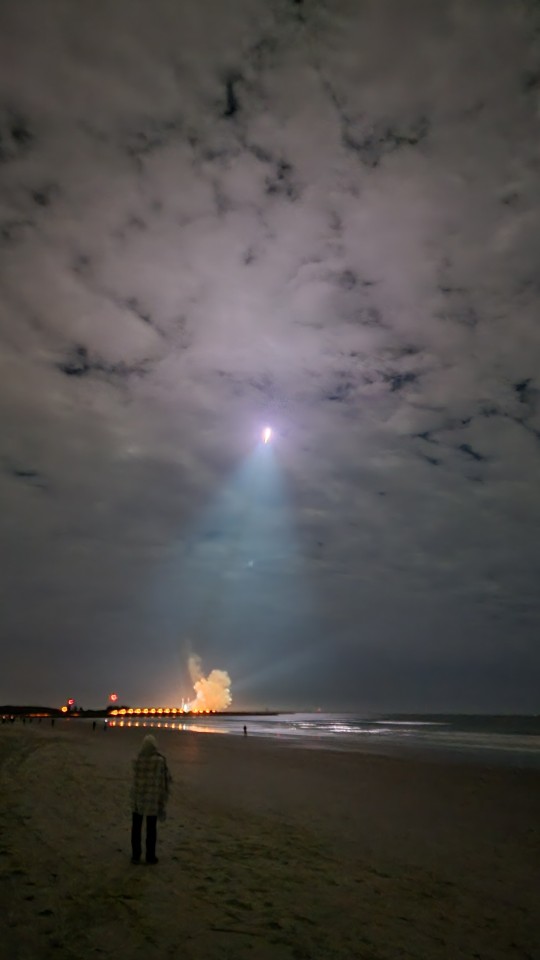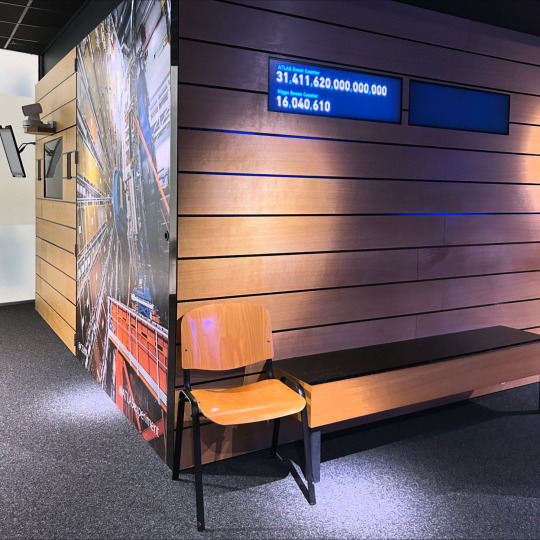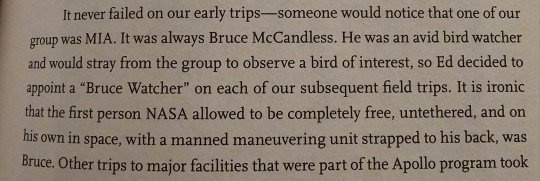/ Jake / 41 / M / Seattle / Engineer / Pan / Lover of maths, stats, and a damm fine cup of coffee.
Don't wanna be here? Send us removal request.
Text
We did a thing today. Go Blue!

A little over of two years of my life went into all of the engines on this launch. It was a privilege to be there for the first flight. Congrats to everyone who put time and energy into NG-1.
0 notes
Text
378 notes
·
View notes
Text
Warm yourself by the fire, NASA style!
youtube
Look no further than this cozy and relaxing fireplace – complete with four RS-25 rocket engines to fill your hearth with light. (And 8.8 million pounds of thrust to power your party to the Moon.)
3K notes
·
View notes
Video
m1=2.0 m2=2.7 m3=2.6 (solar masses) v1x=-3.335 v1y=1.852 v2x=0.755 v2y=-2.714 v3x=-3.264 v3y=0.182 (km/s) x1=-17.0 y1=13.0 x2=-21.0 y2=9.0 x3=-3.0 y3=-14.0 (AU from center) Music: Aurorae Chaos – Bourquenez
210 notes
·
View notes
Text

16 million Higgs bosons, one lonely chair #ATLAS #ATLASvisitorcenter #AVC #controlroom #b3162 #p1 #LHC #CERN #lonelychairsatcern
61 notes
·
View notes
Text

Using multimode propulsion for more efficient trips in space
Over the span of two projects, researchers at the University of Illinois Urbana-Champaign investigated using a propulsion concept known as multimode propulsion to get spacecraft to the moon and developed a technique to design optimal multimode transfers.
NASA provided the team with four real mission scenarios. The goal was to explore how a multimode propulsion system that integrates both a chemical high-thrust mode and an electric low-thrust mode—while using the same propellant—can succeed. They examined using a standard 12-unit CubeSat to accomplish four distinct missions.
"We showed for the first time the feasibility of using multimode propulsion in NASA-relevant lunar missions, particularly with CubeSats," said aerospace engineering Ph.D. student Bryan Cline. "Other studies used arbitrary problems, which is a great starting point. Ours is the first high-fidelity analysis of multimode mission design for NASA-relevant lunar missions."
The study that looked at four NASA-relevant lunar trajectories, "Lunar SmallSat Missions with Chemical-Electrospray Multimode Propulsion," is by Cline and Joshua Rovey from the University of Illinois, Khary Parker and José J. Rosales from NASA's Goddard Space Flight Center, and Stephen West from Space Exploration Engineering. It is published in the Journal of Spacecraft and Rockets.
Cline said one of the advantages to multimode propulsion over a hybrid system is there can be a big savings in the dry mass of the spacecraft. Needing only one fuel tank, for example, saves mass and volume.
"Multimode propulsion systems also expand the performance envelope," he said. "We describe them as flexible and adaptable. I can choose a high-thrust chemical mode to get someplace fast and a low-thrust electrospray to make smaller maneuvers to stay in the desired orbit. Having multiple modes available has the potential to reduce fuel consumption or reduce time to complete your mission objective."
There are also advantages over hybrid propulsion systems which have multiple propulsion modes but each use a separate propellant.
"I can choose to use high-thrust at any time and low-thrust at any time, and it doesn't matter what I did in the past. With a hybrid system, when one tank is empty, I can't choose that option."
Cline said, to complete each of the design reference missions for this project, they made all the choices manually—that is, when to use high-thrust and when to use low-thrust. Because it was all manual, the trajectories weren't optimal. Following this work, Cline developed an algorithm, a set of equations, to automatically select when to use high-thrust and low-thrust to ensure that the resulting trajectory is optimal.
"This was an entirely different beast where the focus was on the development of the method, rather than the specific results shown in the paper. We developed the first indirect optimal control technique specifically for multimode mission design. As a result, we can develop transfers that obey the laws of physics while achieving a specific objective such as minimizing fuel consumption or transfer time," Cline said.
Cline first solved a simple two-dimensional transfer between Earth and Mars that decides the optimal times to use high-thrust, low-thrust, or just coast. He then solved a three-dimensional transfer to geostationary orbit that minimizes fuel consumption.
The study that developed the method, "Indirect optimal control techniques for multimode propulsion mission design," is by Cline and Alex Pascarella, and their faculty advisers, Robyn Woollands and Joshua Rovey. It is published in the journal Acta Astronautica.
"We showed the method works on a mission that's relevant to the scientific community," he said. "Now you can use it to solve all kinds of mission design problems. The math is agnostic to the specific mission. And because the method utilizes variational calculus, what we call an indirect optimal control technique, it guarantees that you'll get at least a locally optimal solution."
Cline said multimode propulsion is emerging, enabling, and enhancing. "It's an emerging technology because it's still being developed on the hardware side. It's enabling in that we can accomplish all kinds of missions we wouldn't be able to do without it. And it's enhancing because if you've got a given mission concept, you can do more with multimode propulsion. You've got more flexibility. You've got more adaptability.
"I think this is an exciting time to work on multimode propulsion, both from a hardware perspective, but also from a mission design perspective. We're developing tools and techniques to take this technology from something we test in the basement of Talbot Lab and turn it into something that can have a real impact on the space community."
IMAGE: Earth–Mars minimum-fuel trajectory when the CubeSAT is coasting, as well as in mode 1-low thrust and mode 2-high thrust. Credit: Acta Astronautica (2024). DOI: 10.1016/j.actaastro.2024.07.020
4 notes
·
View notes
Text
laTeX is great up until you try and do something abnormal, like using a different font and wanting your equation to have a congruent styling
39 notes
·
View notes
Text
It's Halloween, so how about some spooky math.
there's this thing called the Curve-shortening flow, and in simple terms, it applies derivatives to itself. It's sorta like taking a curve and, well, shortening it. Like, if you pulled the curve inwards wherever it's bent inwards, y'know?
In more complicated terms, we transform the curve's points based on the slope of the curve at those points, specifically in the direction of the normal.

Either way though, mathematicians after finding this thing also discovered a special case, being -ln(cos(x)), where as the CSF is applied, the shape actually moves up. It's actually the only case where a curve travels along as you continuously reapply the transformation.

But because these mathematicians were funny, they decided to name it the grim reaper, due to fact that any y will be funneled into the center, and added to the singularity, basically killing the point.
What I'm trying to say is the singularity in the grim reaper rapidly approaches, and there is no hope to escape what will soon be shortened to nothing.
139 notes
·
View notes
Text
Water droplets orbiting a charged metal sphere on the ISS.
3K notes
·
View notes
Text
Saturn, the planet with the most known moons in our solar system: 146
12K notes
·
View notes
Text

Chair ready to 3D print anything in Titanium #b156 #workshop #titanium #3dprinting #CERN #lonelychairsatcern
35 notes
·
View notes
Text

Hilariously funny that the guy known for wandering off without warning to look at birds was allowed to do this

85K notes
·
View notes
Text
Saturn’s moon Enceladus ejects so much water that it has formed a ring or torus that supplies the entire Saturnian system, according to a discovery by the James Webb Space Telescope. Discover more about our solar system with Webb: https://webbtelescope.pub/47v4JRE
315 notes
·
View notes














